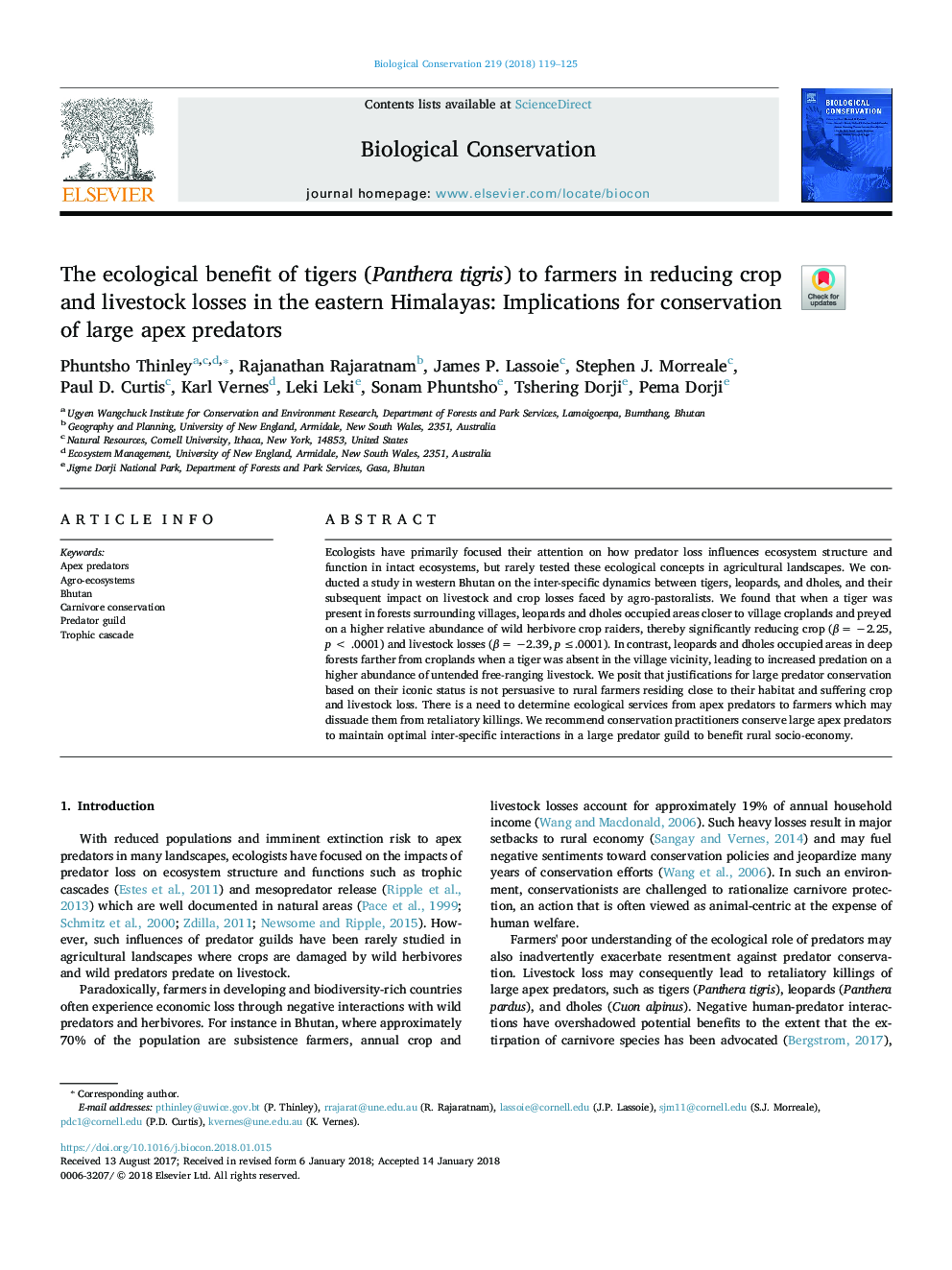| Article ID | Journal | Published Year | Pages | File Type |
|---|---|---|---|---|
| 8847443 | Biological Conservation | 2018 | 7 Pages |
Abstract
Ecologists have primarily focused their attention on how predator loss influences ecosystem structure and function in intact ecosystems, but rarely tested these ecological concepts in agricultural landscapes. We conducted a study in western Bhutan on the inter-specific dynamics between tigers, leopards, and dholes, and their subsequent impact on livestock and crop losses faced by agro-pastoralists. We found that when a tiger was present in forests surrounding villages, leopards and dholes occupied areas closer to village croplands and preyed on a higher relative abundance of wild herbivore crop raiders, thereby significantly reducing crop (βâ¯=â¯â2.25, pâ¯<â¯.0001) and livestock losses (βâ¯=â¯â2.39, pâ¯â¤.0001). In contrast, leopards and dholes occupied areas in deep forests farther from croplands when a tiger was absent in the village vicinity, leading to increased predation on a higher abundance of untended free-ranging livestock. We posit that justifications for large predator conservation based on their iconic status is not persuasive to rural farmers residing close to their habitat and suffering crop and livestock loss. There is a need to determine ecological services from apex predators to farmers which may dissuade them from retaliatory killings. We recommend conservation practitioners conserve large apex predators to maintain optimal inter-specific interactions in a large predator guild to benefit rural socio-economy.
Related Topics
Life Sciences
Agricultural and Biological Sciences
Ecology, Evolution, Behavior and Systematics
Authors
Phuntsho Thinley, Rajanathan Rajaratnam, James P. Lassoie, Stephen J. Morreale, Paul D. Curtis, Karl Vernes, Leki Leki, Sonam Phuntsho, Tshering Dorji, Pema Dorji,
